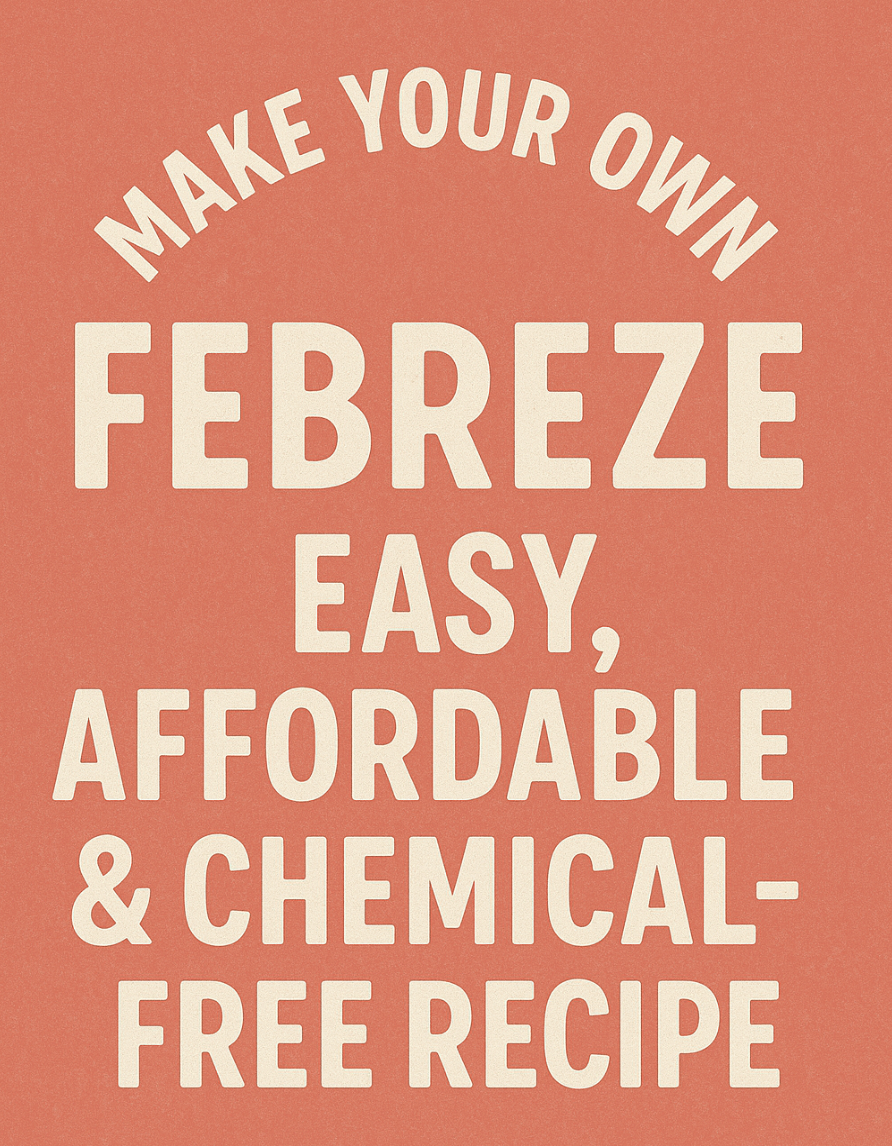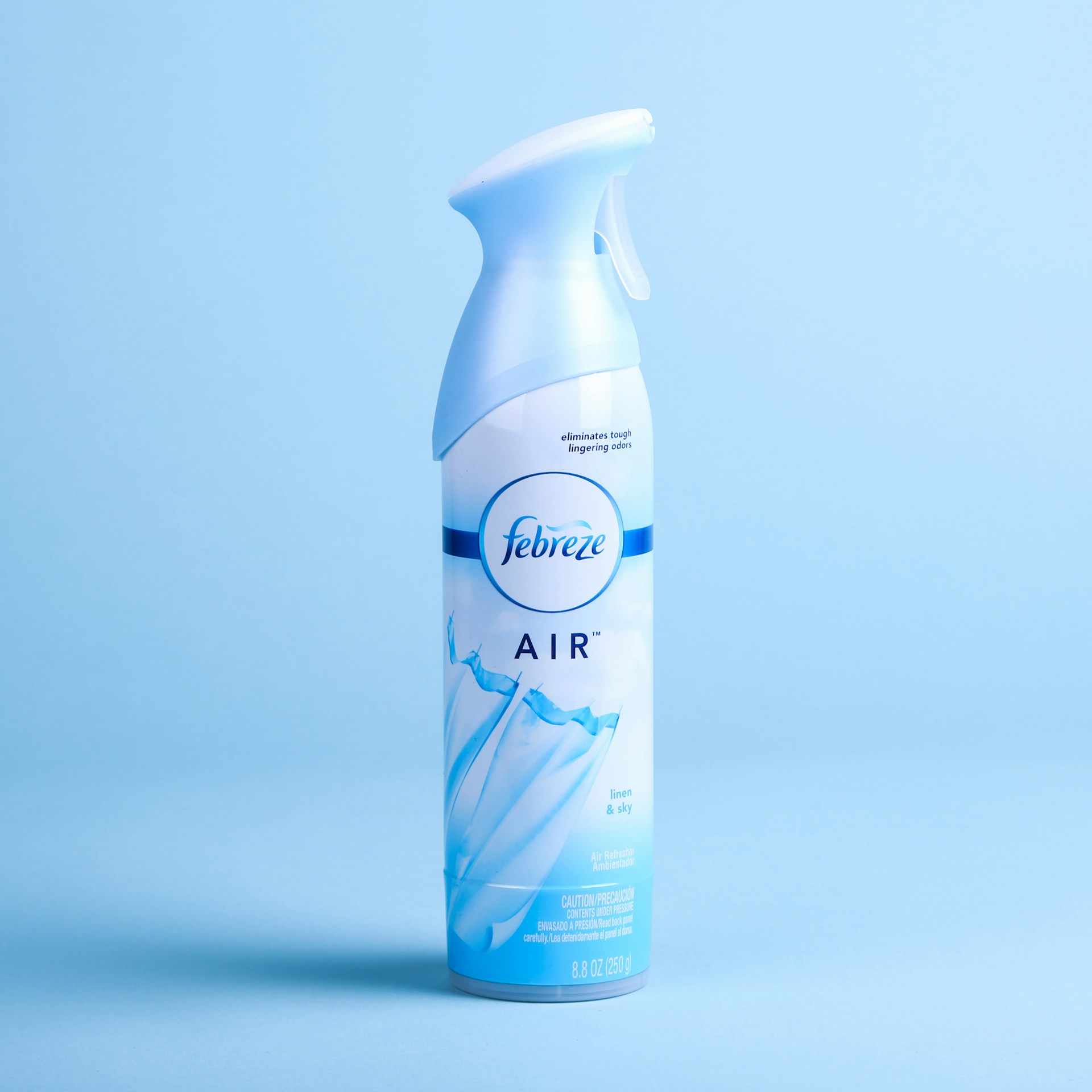Key Takeaways
- DIY Febreze is eco-friendly, affordable, and non-toxic, using simple ingredients like baking soda, water, and essential oils.
- Unlike store-bought versions, it doesn’t just mask odors but neutralizes them naturally.
- You can customize the scent with essential oils to fit your personal preference.
- Homemade alternatives like vinegar sprays and witch hazel blends also work great for odor control.
- Always test on fabrics first and avoid harmful oils if you have pets.
- Store in a cool, dark place and use within 1–2 months for best results.
Who needs fake scents, harsh chemicals, and an empty wallet? Not us! DIY Febreze is just the solution to a cleaner, greener way to freshen up your space in a flash. Let’s diy our very own natural air spray in no time!
What Is Febreze And How Does It Work?
Febreze isn’t just an average air freshener, it’s science in a bottle! It’s designed to tackle pesky odors instead of just masking them.
It is basically a magical-sounding compound called cyclodextrin (think of it as a fancy sugar molecule) that traps smelly particles like a sponge. So, rather than your room smelling like “wet dog mixed with lavender,” Febreze locks in the bad smells and replaces them with a fresh, clean scent.
It was first developed by scientists at Procter & Gamble, and febreze changed the game for freshening up our homes. It works wonders on fabric, air, furniture, shoes, you name it! Just a few spritzes, and your space will feel like it just had a spa day.
But here’s the thing: while store-bought Febreze is super effective, many folks are concerned about the chemicals in it. That’s where DIY Febreze comes into play. It offers all the freshness without any of those unpronounceable ingredients.
In a nutshell? Febreze doesn’t just “mask” odors, it actually eliminates them. And once you discover how it works, you’ll be eager to whip up your own version in no time!
Why Make Your Own Febreze?
Creating your own Febreze is a clever and practical choice. If you want to save some cash, steer clear of harsh chemicals. The store-bought air freshener adds up over time and often comes packed with artificial fragrances, preservatives, and other ingredients that irritate sensitive skin or trigger allergies.
On the flip side, DIY Febreze is super easy to whip up and uses safe, everyday items like water, baking soda, and essential oils. It’s just as effective at banishing odors from fabrics, the air, or even your shoes and closets. Plus, you have complete control over the fragrance, you can choose soothing lavender, zesty citrus, or even festive holiday blends
And let’s not forget, it’s eco-friendly! By reusing a spray bottle, you’re cutting down on plastic waste, and using natural ingredients is better for both your home and the environment.
Basic DIY Febreze Recipe
What You’ll Need:
- 1 cup of distilled water (or boiled and cooled tap water)
- 2 tablespoons of fabric softener (optional, for scent and softness)
- 1 tablespoon of baking soda (for odor absorption)
- 10–20 drops of essential oil (like lavender, lemon, eucalyptus, or peppermint)
- 1 clean spray bottle (preferably 16 oz or larger)
- Small funnel (optional, but helpful)
Step-By-Step Instructions:
- Start by adding the baking soda to your spray bottle and using a funnel helps prevent any spills.
- If you’re including fabric softener, go ahead and pour that in too; it’ll give your mixture a lovely, long-lasting scent.
- Next, add your essential oil drops. We recommend starting with about 10 drops, and you can always add more if you prefer a bolder fragrance.
- Now, carefully pour in the distilled water, but make sure to leave a little space at the top so you can shake everything up easily.
- Once that’s done, screw the spray cap on tightly and give the bottle a good shake to mix all the ingredients together!
Tips For Everyday Use:
- Spray a light mist on your sofas, curtains, rugs, pet beds, and even inside your shoes, just be careful not to soak the fabric.
- Make sure to give it a good shake before each use since the baking soda tends to settle at the bottom.
- It’s a good idea to test it on a small, hidden area of the fabric first to ensure there’s no discoloration.
- Store it in a cool, dark place, and try to use it within 1 to 2 months for the best freshness.
What Are Its Natural And Chemical-Free Alternatives?
- Baking Soda Spray: Start by mixing 1 tablespoon of baking soda with 1 cup of warm water in a spray bottle. Give it a good shake, then spray it on your fabrics and around the room. Baking soda is great at neutralizing odors naturally, and it won’t leave any artificial scents behind.
- Vinegar And Essential Oils: For this mix, combine 1 part white vinegar with 2 parts water, and add about 10 to 15 drops of your favorite essential oil, think lemon, tea tree, or lavender. The vinegar works wonders at cutting through bacteria and odors, while the essential oil brings in a lovely, fresh aroma.
- Witch Hazel-Based Sprays: Witch hazel is a fantastic natural preservative that blends nicely with essential oils. To make a gentle, skin-friendly air freshener, mix 1/4 cup of witch hazel with 3/4 cup of distilled water and toss in 15 drops of essential oils.
What Are Some Safety Tips And Precautions You Should Take?
- Before you start spraying on delicate fabrics like silk, leather, or suede, it’s super important to do a patch test. Just spray a little bit in a hidden spot and wait about 10 to 15 minutes to see if there’s any discoloration or stains.
- Make sure to shake the bottle well before each use, especially if you’re using ingredients like baking soda or essential oils, since they tend to settle at the bottom. This way, you’ll get an even mix and a better scent distribution.
- If you’re using essential oils, be careful! Some oils, like tea tree, clove, or eucalyptus, can be harmful to pets, especially cats and dogs. So it’s a good idea to look up pet-safe options or just skip them if you’re not sure.
- Don’t forget to label your bottle clearly, especially if you’re reusing a container. This will help avoid any accidental mix-ups.
- Keep the spray out of reach of little ones, and steer clear of spraying it directly on your skin, face, or food surfaces.
- Lastly, store your DIY Febreze in a cool, dry spot, away from direct sunlight. This will help it last longer and prevent any separation.
How Long Does Homemade Febreze Last?
Homemade Febreze usually lasts around 1 to 2 months, but this varies based on the ingredients you use and how you store it. Unlike the store-bought versions that have preservatives, DIY sprays can lose their freshness and effectiveness over time.
If you’re mixing up your spray with distilled water, essential oils, and baking soda, it should remain good for several weeks. On the other hand, if you opt for tap water or fabric softener, it might spoil more quickly because of potential bacterial growth especially if it’s kept in a warm spot.
To help your spray last longer, make sure to store it in a cool, dark place and give it a good shake before each use to keep everything well mixed. Adding a little witch hazel or rubbing alcohol also serves as a mild preservative.
Conclusion
So, creating your own DIY Febreze is an easy, budget-friendly, and environmentally conscious way to keep your home smelling delightful without the use of harsh chemicals.


